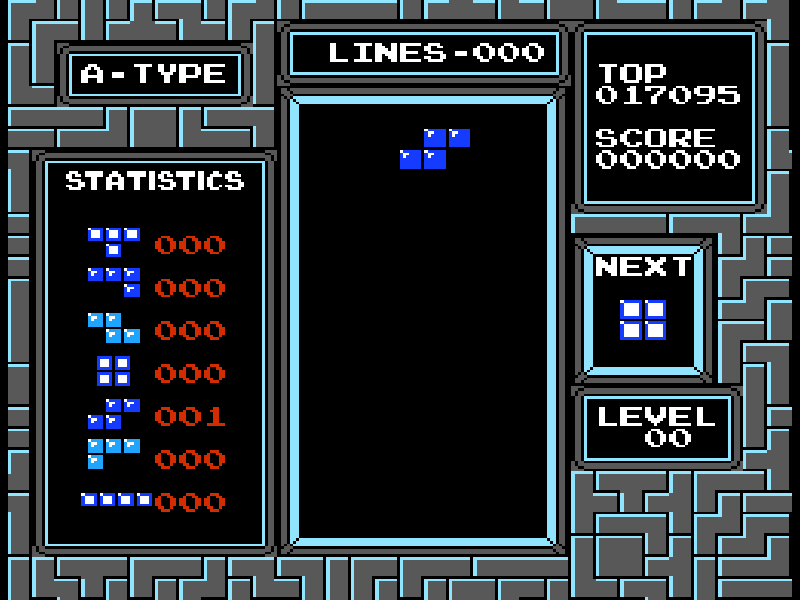For my 2nd year, all three quarters of classes were on zoom. As I’m sure this can be said for many people, I was not the most diligent student during those quarters of zoom classes. To cope with the hours upon hours staring at my computer screen, I developed the habit of playing Tetris99 on my switch. This wasn’t just a silly habit; in the span of 3 months in my spring quarter, I played over 150 hours of Tetris99.
The game is complex; you can choose other players to target, and every time you eliminate a row, it adds that row to the target’s game. At the same time, you have to fend off other players who are flooding your game with other rows. I got pretty good at Tetris by the end of spring quarter (I cannot say the same about my abilities in my Quantum Mechanics class, though), and I wanted to test out my abilities with the original 1989 Tetris release.
I found an online version of the original 1989 game, which, I will admit, makes the game easier than if I were playing it on the original Nintendo console. The game gives you almost no instructions or introduction of the goal; you have to figure that one out by yourself. Due to the lack of handholding, I found myself looking pretty closely at that first screen of Tetris, much like we did as a class with Super Mario Brothers.

You know from just the start here that the game is tracking a number of statistics for you: which blocks have been used, what your current score is, what block is next, how many “lines” you have eliminated, and what level you are currently on. For a first time player, this is a lot of information to digest. You know you want to increase your score, and you know you want to move on to the next level; however, you do not have many hints about how to do those things.
I tried to play the game how I assume as first-time player would; I stacked the blocks in the most aesthetically pleasing way as possible without much Tetris strategy. From here, I note that with each block I put down, the score goes up by six. When I eliminate a row, the score goes up by 100. That huge difference in point gain would, hopefully, signal to the player that the point of the game is to get rid of as many blocks as possible. As you continue to do so, you will move up levels, signified by a change in color of the blocks.
Overall, this first screen is a good introduction to the goals of the game for the first-time player.
However, this design is also complicated for the first-time player; the game relies on the premise that beginner players will probably die very quickly, and the hope is that the game is addicting enough that they will want to try again. Additionally, there is no way for the player to immediately discover the bonus points given when you get “tetris,” or when you clear four rows of blocks at once.
As a more experienced Tetris player, I was shocked at how, even on the computer version, the delay in the rotation of the blocks increases the games difficulty. In the Tetris I normally play, as I increase levels the speed of the dropping blocks becomes so unmanageable that it often is the cause of my death. However, in classic Tetris, the slight pause between keyboard click and rotation of the block only heightens the difficulty of the increasing speed of the falling blocks.
The impact of Tetris in day to day life is massive; it is one of the most popular video games of all time (as of 2011, it had sold over 170 million copies), and it has one of the most iconic screens of all time; the Tetris screen is almost universally recognizable. There is something to be said about how simple Tetris is for its success; the barrier to entry is very low. At the same time, to become good at Tetris there is strategy and complexity within the game. These things combined result in a game that is so successful and so addicting; I know that my 150 hours of Tetris99 weren’t just due to love for the game, but more due to that once I die, I know that I’ll win if I give it just one more try…
